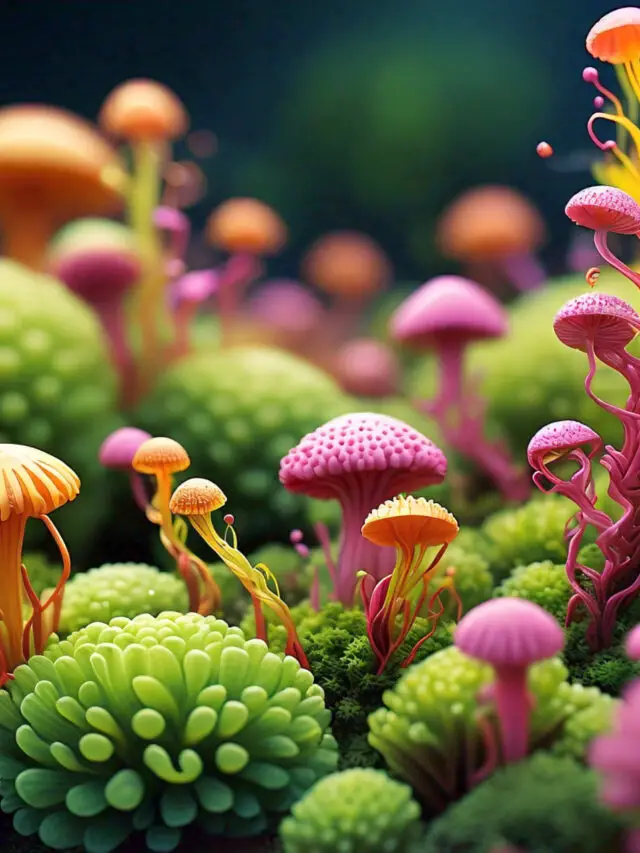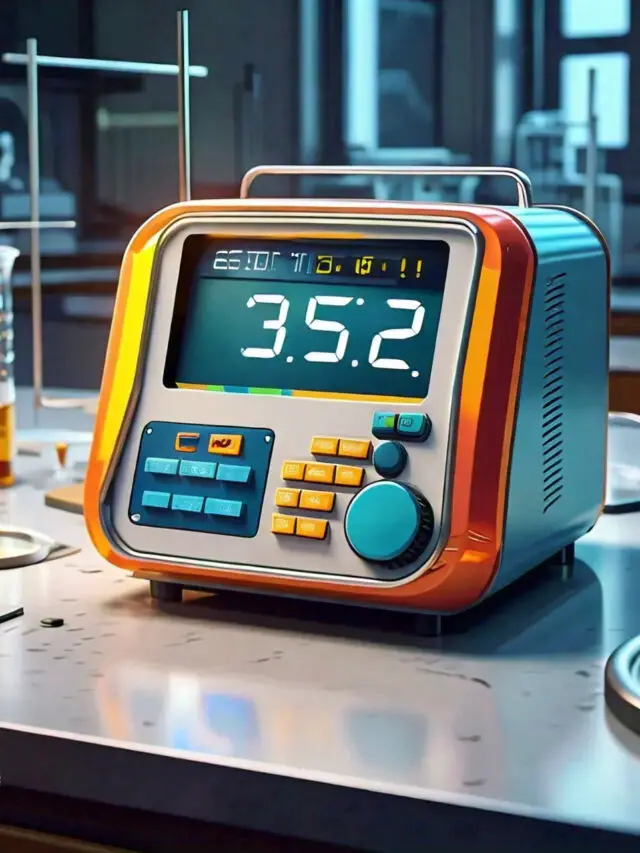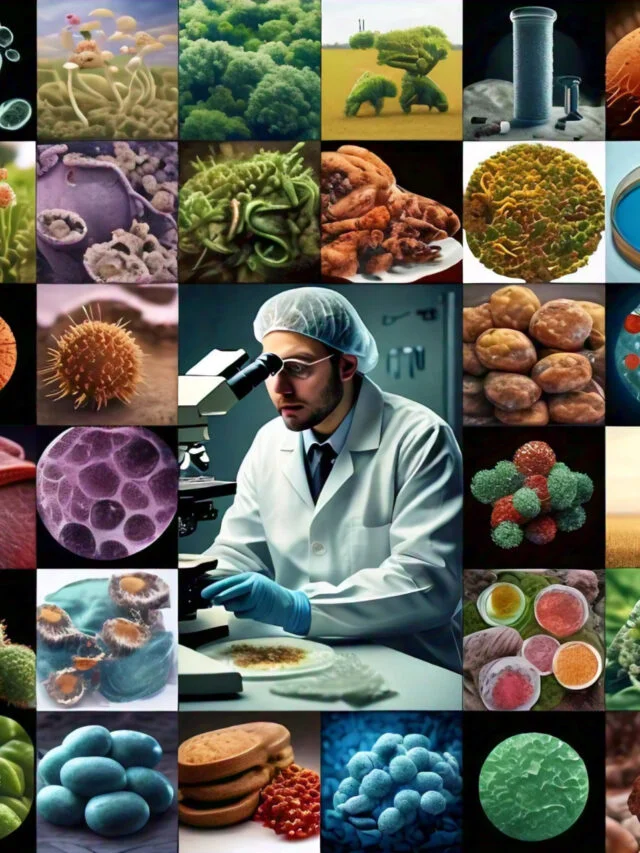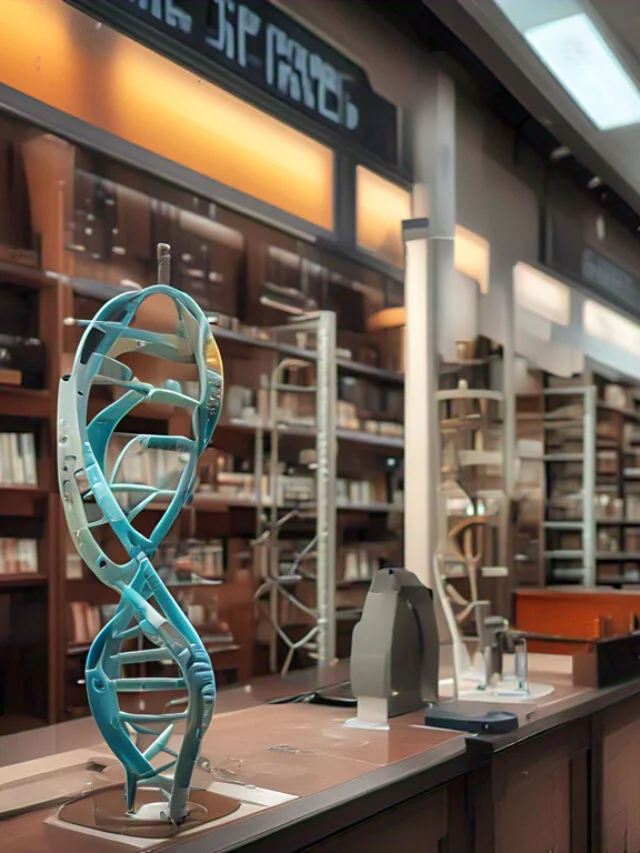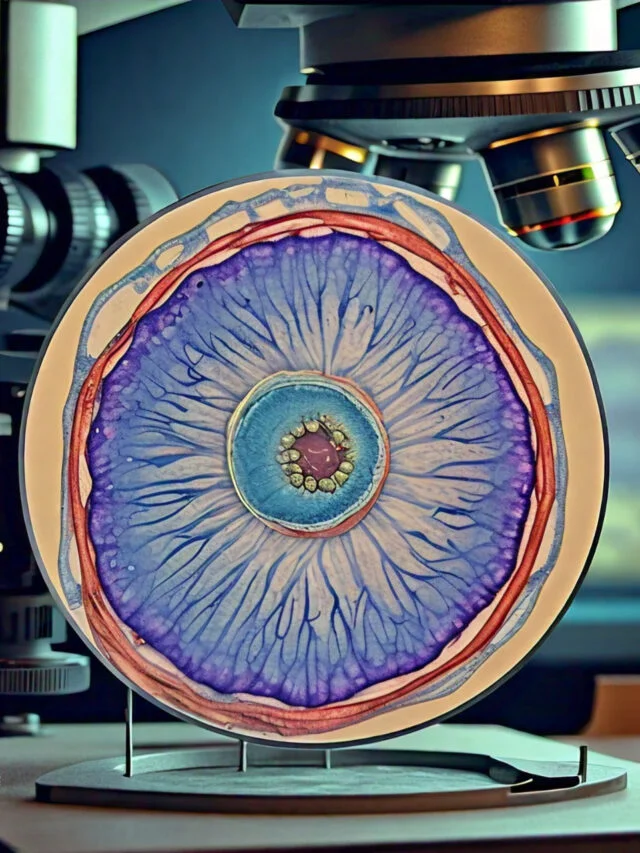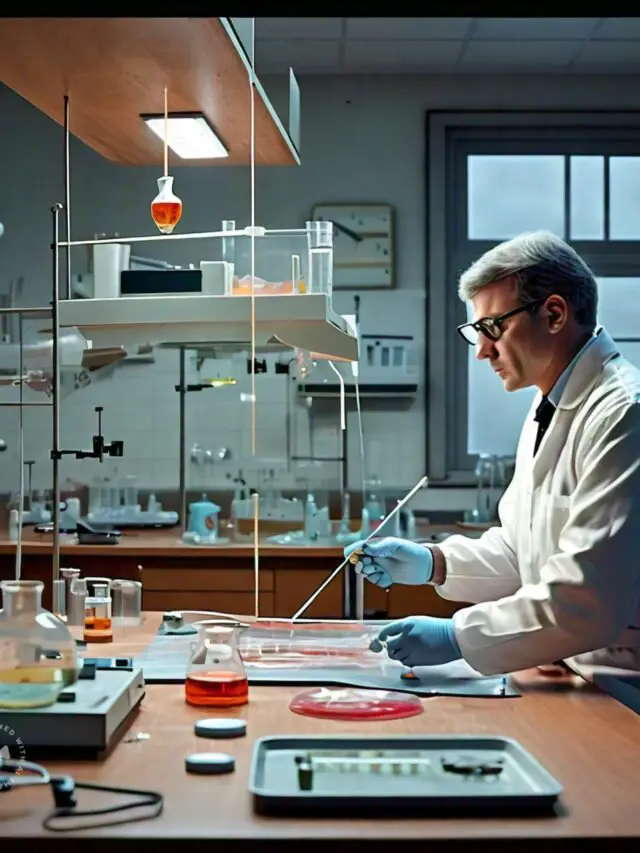Contents
What is Microbiology?
Microbiology, derived from the Greek words μῑκρός (mīkros) meaning ‘small’, βίος (bíos) meaning ‘life’, and -λογία (-logía) meaning ‘study of’, is the scientific discipline focused on the study of microorganisms. These microorganisms can be unicellular (single-celled), multicellular (comprising multiple cells), or acellular (lacking cellular structure). The field encompasses several sub-disciplines, including virology, bacteriology, protistology, mycology, immunology, and parasitology.
Microorganisms are broadly categorized into eukaryotic and prokaryotic groups. Eukaryotic microorganisms, such as fungi and protists, possess membrane-bound organelles. In contrast, prokaryotic microorganisms, including bacteria and archaea, lack these organelles. This fundamental distinction influences how these organisms function, reproduce, and interact with their environments.
Historically, microbiologists employed techniques like culture, staining, and microscopy to isolate and identify microorganisms. However, these methods are limited, as less than 1% of microorganisms from common environments can be cultured using traditional techniques. Advances in biotechnology have revolutionized the field, with molecular biology tools like DNA sequencing providing more accurate identification. For instance, the 16S rRNA gene sequence is commonly used to identify bacterial species.
The classification of viruses has been a topic of debate. Viruses are considered either very simple microorganisms or very complex molecules, as they require host cells to replicate. Prions, infectious proteins, were also studied by virologists due to their initially presumed link to chronic viral infections, though they are not classified as microorganisms.
The concept of microorganisms predates their discovery. Ancient Jain texts from India and writings by the Roman scholar Marcus Terentius Varro hypothesized the existence of unseen life forms. The first recorded microscopic observation was made by Robert Hooke in 1666, who observed the fruiting bodies of molds. Earlier, in 1658, Jesuit priest Athanasius Kircher described observing microorganisms in milk and decaying matter. Antonie van Leeuwenhoek is often hailed as the father of microbiology for his detailed observations and experiments with microorganisms in the 1670s using simple microscopes he designed.
The field of microbiology began to develop significantly in the 19th century. Louis Pasteur’s work disproved the theory of spontaneous generation and established microbiology as a legitimate scientific discipline. His contributions to understanding fermentation, vaccination, and pasteurization were groundbreaking. Robert Koch, known for his work in medical microbiology, established Koch’s postulates, linking specific microorganisms to specific diseases, and identified the bacteria causing tuberculosis and cholera.
Microbiology continues to evolve, offering profound insights into the fundamental processes of life, disease mechanisms, and environmental interactions. The ongoing research and technological advancements promise to deepen our understanding and expand the applications of this essential scientific field.
History of Microbiology
The history of microbiology is a fascinating journey that dates back to ancient hypotheses and philosophical speculations long before the actual discovery of microorganisms. The concept of unseen life forms was proposed as early as the 6th century BCE by Mahavira, whose teachings in Jainism spoke of minute creatures inhabiting the elements of earth, water, air, and fire. These early ideas suggested a profound understanding of microscopic life well before the advent of modern science.
The Roman scholar Marcus Terentius Varro, in the 1st century BCE, warned against building homes near swamps due to the presence of invisible creatures that could cause diseases. Similarly, Persian scientists like Avicenna, Ibn Zuhr, and Al-Razi hypothesized about microorganisms, with Al-Razi providing early descriptions of diseases such as smallpox. These early theories were crucial in setting the stage for the scientific discoveries that followed.
The formal study of microbiology began to take shape in the 17th century. In 1676, Antonie van Leeuwenhoek, using a simple microscope of his own design, observed bacteria and other microorganisms, earning him the title of the father of microbiology. However, it is important to note that Robert Hooke made earlier microscopic observations of mold in 1665, and Athanasius Kircher, a Jesuit priest, described microscopic organisms in the mid-17th century, possibly predating Leeuwenhoek’s discoveries.
The 19th century marked significant advancements in the field of microbiology. Ferdinand Cohn, a botanist, laid the groundwork for bacterial classification and discovered bacterial endospores. Louis Pasteur and Robert Koch, contemporaries of Cohn, are often celebrated as the founders of modern microbiology and medical microbiology, respectively. Pasteur’s experiments debunked the theory of spontaneous generation, establishing microbiology as a credible scientific discipline. He also developed pasteurization and vaccines for diseases like anthrax and rabies. Koch, on the other hand, formulated Koch’s postulates, a set of criteria to link specific microorganisms to specific diseases, and identified the causative agents of tuberculosis and cholera.
The true diversity of the microbial world began to unfold with the contributions of Martinus Beijerinck and Sergei Winogradsky in the late 19th and early 20th centuries. Beijerinck’s work on viruses and his development of enrichment culture techniques revolutionized microbiology by enabling the cultivation of diverse microorganisms. Winogradsky’s concept of chemolithotrophy and his studies on nitrogen-fixing and nitrifying bacteria highlighted the essential roles of microorganisms in environmental processes.
The field continued to expand with discoveries such as the identification of bacteriophages by Felix d’Herelle in 1917, which paved the way for applied microbiology. Joseph Lister’s introduction of antiseptic surgery using phenol further emphasized the practical applications of microbiological research in improving human health.
Overall, the historical development of microbiology illustrates a gradual but profound transformation from speculative hypotheses to a rigorous scientific discipline. The contributions of numerous scientists over centuries have revealed the complex and diverse nature of microorganisms, significantly impacting medicine, industry, and our understanding of life itself.
Branches of Microbiology
Microbiology is a diverse and dynamic field that encompasses the study of microorganisms and their interactions with humans, animals, plants, and the environment. This scientific discipline is divided into several specialized branches, each focusing on different types of microorganisms and their roles in various biological processes and applications. Here are some of the main branches of microbiology:
Bacteriology
Bacteriology is the study of bacteria, focusing on their morphology, physiology, genetics, and ecology. Bacteriologists examine how bacteria contribute to diseases, their role in natural environments, and their applications in industries such as biotechnology and pharmaceuticals. Understanding bacterial behavior and mechanisms is crucial for developing antibiotics and other bacterial management strategies.
Virology
Virology deals with the study of viruses and virus-like agents. This branch explores viral structure, classification, replication, and evolution. Virologists study how viruses infect host cells, cause diseases, and interact with the immune system. Research in virology is fundamental for developing antiviral therapies, vaccines, and understanding viral outbreaks.
Mycology
Mycology is the branch dedicated to the study of fungi, including yeasts, molds, and mushrooms. Mycologists investigate fungal taxonomy, morphology, genetics, and ecology. This field is essential for understanding fungal infections, their impact on agriculture, and the production of fungal-based bioproducts such as antibiotics and enzymes.
Phycology
Phycology, or algology, is the study of algae. Phycologists examine the taxonomy, morphology, physiology, and ecology of algae. Algae play significant roles in aquatic ecosystems, serving as primary producers and contributing to global carbon cycles. They are also explored for biofuel production and as a source of nutritional supplements.
Nematology
Nematology focuses on the study of nematodes, commonly known as roundworms. Nematologists research their taxonomy, morphology, anatomy, physiology, and ecology. This field is vital for understanding nematode-related diseases, crop protection, and soil health management.
Parasitology
Parasitology is the study of parasites, including protozoa, helminths (worms), and ectoparasites (external parasites). Parasitologists examine parasite taxonomy, morphology, life cycles, pathogenesis, and host-parasite interactions. This branch is crucial for understanding parasitic diseases and developing treatments and control measures.
Immunology
Immunology studies the immune system and its responses to pathogens such as bacteria and viruses. Immunologists explore immune mechanisms, immunological disorders, and the development of vaccines. This field is essential for understanding how the body defends itself against infections and for developing immunotherapies.
Microbial Genetics
Microbial genetics focuses on the genetic information, inheritance, and gene expression in microorganisms. Researchers in this field study how genetic material is organized, replicated, and transferred among microbes. This knowledge is fundamental for genetic engineering, biotechnology, and understanding microbial evolution.
Microbial Ecology
Microbial ecology examines the interactions between microorganisms and their environments. This field studies microbial communities, their roles in biogeochemical cycles, nutrient cycling, and ecological processes. Microbial ecologists explore how microbes influence and are influenced by their habitats, contributing to biodiversity and ecosystem functioning.
Industrial Microbiology
Industrial microbiology involves the use of microorganisms in industrial processes such as fermentation, biofuel production, and pharmaceutical manufacturing. This branch focuses on optimizing microbial processes for large-scale production of products like antibiotics, enzymes, and biofuels, enhancing efficiency and sustainability.
Environmental Microbiology
Environmental microbiology studies microbial populations in natural environments, including soil, water, and air. Researchers in this field investigate microbial communities, nutrient cycling, bioremediation, and the roles of microorganisms in environmental health and ecosystem processes.
Agricultural Microbiology
Agricultural microbiology explores the interactions between microorganisms and agricultural systems. This includes studying soil microbes, plant-microbe interactions, and microbial biocontrol agents for pest management. This field aims to improve crop yield, soil health, and sustainable agricultural practices.
Food Microbiology
Food microbiology examines the role of microorganisms in food production, preservation, and safety. This branch studies microbial populations in food products, fermentation processes, and foodborne illnesses. Research in this field helps improve food safety, extend shelf life, and enhance food quality.
Medical Microbiology
Medical microbiology focuses on microorganisms that cause diseases in humans. This field studies the life cycles, physiology, pathogenicity, and genetic characteristics of pathogens. Understanding these aspects helps in diagnosing, treating, and controlling infectious diseases, as well as developing new medical treatments and preventive measures.
Each of these branches of microbiology plays a critical role in advancing our understanding of the microbial world and its impact on health, industry, and the environment. Through continuous research and innovation, microbiologists contribute to solving global challenges and improving quality of life.
Scope and Career Opportunities of Microbiology
Microbiology, the study of microorganisms, offers vast and diverse opportunities due to its critical role in health, industry, agriculture, and environmental science. The scope of microbiology extends beyond basic research, impacting various sectors with practical applications that drive innovation and development. Here’s an overview of the scope and career opportunities in microbiology:
Scope of Microbiology
- Medical Microbiology:
- Pathogen Research: Understanding the mechanisms of diseases caused by bacteria, viruses, fungi, and parasites.
- Diagnostics: Developing diagnostic tools and techniques for detecting infectious agents.
- Therapeutics: Designing antibiotics, antivirals, vaccines, and other treatments to combat microbial infections.
- Public Health: Monitoring and controlling outbreaks of infectious diseases, epidemiological studies.
- Industrial Microbiology:
- Fermentation Technology: Utilizing microorganisms to produce products like antibiotics, enzymes, alcohol, organic acids, and vitamins.
- Biotechnology: Genetic engineering of microbes for the production of recombinant proteins, pharmaceuticals, and biofuels.
- Quality Control: Ensuring the safety and efficacy of products through microbial testing in industries like pharmaceuticals and cosmetics.
- Environmental Microbiology:
- Bioremediation: Using microorganisms to clean up pollutants and toxins from the environment.
- Waste Management: Employing microbial processes to treat sewage and waste, reducing environmental impact.
- Ecosystem Studies: Investigating microbial roles in nutrient cycling, soil health, and ecosystem functioning.
- Agricultural Microbiology:
- Soil Health: Studying soil microbiomes to improve crop yield and soil fertility.
- Plant-Microbe Interactions: Developing biofertilizers and biopesticides to promote sustainable agriculture.
- Genetically Modified Organisms (GMOs): Engineering crops for better resistance to pests and diseases.
- Food Microbiology:
- Food Safety: Ensuring food products are free from harmful microorganisms.
- Food Preservation: Using microbial processes for the preservation and enhancement of food quality.
- Fermentation: Exploring fermentation techniques to produce foods like cheese, yogurt, and bread.
- Pharmaceutical Microbiology:
- Drug Development: Discovering new drugs and therapeutic agents from microbial sources.
- Vaccine Production: Developing vaccines to prevent infectious diseases.
- Clinical Trials: Conducting research to test the efficacy and safety of new pharmaceutical products.
Career Opportunities in Microbiology
- Clinical Microbiologist:
- Work in hospitals, diagnostic laboratories, and public health organizations.
- Perform tests to detect and identify pathogens, manage infection control programs, and advise on treatment options.
- Industrial Microbiologist:
- Employed in biotechnology companies, pharmaceutical industries, and food production companies.
- Involved in research and development, quality control, and production processes.
- Environmental Microbiologist:
- Work with environmental agencies, non-profits, and research institutions.
- Study microbial interactions with the environment, develop bioremediation strategies, and monitor environmental health.
- Agricultural Microbiologist:
- Work with agricultural research organizations, agrochemical companies, and universities.
- Research soil and plant microbiomes, develop biofertilizers and biopesticides, and improve crop production techniques.
- Food Microbiologist:
- Employed in food manufacturing companies, regulatory bodies, and research institutions.
- Ensure food safety and quality, develop new food products, and study microbial fermentation processes.
- Research Scientist:
- Work in academic institutions, government research labs, and private research organizations.
- Conduct fundamental and applied research in various fields of microbiology.
- Quality Assurance and Control Specialist:
- Work in industries like pharmaceuticals, food, and cosmetics.
- Ensure products meet safety and quality standards through microbial testing and validation processes.
- Public Health Microbiologist:
- Work with government health departments, international health organizations, and non-profits.
- Monitor and control infectious disease outbreaks, conduct epidemiological research, and develop public health policies.
- Academic Career:
- Become a professor or lecturer in universities and colleges.
- Teach microbiology courses, supervise student research, and conduct independent research projects.
- Biotechnology Consultant:
- Provide expertise to biotechnology firms, research institutions, and government agencies.
- Advise on microbial applications in biotechnology, regulatory compliance, and product development.
The field of microbiology offers a wide range of career paths, each contributing to critical advancements in health, industry, agriculture, and environmental sustainability. With continuous research and technological innovations, microbiologists play a vital role in addressing global challenges and improving quality of life.
Importance of Microbiology
Here are several key reasons highlighting the importance of microbiology:
1. Medical Advancements:
- Disease Understanding and Treatment: Microbiology has been fundamental in identifying the causative agents of infectious diseases, enabling the development of treatments and preventive measures. Discoveries in microbiology have led to antibiotics, vaccines, and antiviral drugs that save millions of lives each year.
- Antibiotic Resistance: Research in microbiology is essential in understanding and combating antibiotic-resistant bacteria, a growing public health threat. Microbiologists work to develop new antibiotics and alternative therapies to address this issue.
- Diagnostics: Advancements in microbial diagnostics allow for rapid and accurate detection of pathogens, facilitating early treatment and control of infectious diseases.
2. Industrial Applications:
- Biotechnology: Microorganisms are employed in the production of various biotechnological products, including enzymes, biofuels, bioplastics, and pharmaceuticals. Genetic engineering of microbes has led to the creation of insulin, growth hormones, and other therapeutic agents.
- Fermentation: Microbial fermentation processes are crucial in producing food items like yogurt, cheese, bread, beer, and wine. Industrial microbiologists optimize these processes for better yield and quality.
3. Agricultural Improvements:
- Soil Health and Fertility: Microorganisms play a significant role in nutrient cycling and maintaining soil health. They help decompose organic matter, fix nitrogen, and promote plant growth, which is vital for sustainable agriculture.
- Biocontrol Agents: Microbes are used as biocontrol agents to manage agricultural pests and diseases, reducing the need for chemical pesticides and enhancing crop protection.
- Genetically Modified Crops: Microbial genes are utilized in creating genetically modified crops with improved resistance to pests, diseases, and environmental stresses.
4. Environmental Impact:
- Bioremediation: Microorganisms are employed in bioremediation to clean up polluted environments, including oil spills, heavy metal contamination, and pesticide residues. They break down harmful substances into less toxic forms, aiding in environmental restoration.
- Waste Management: Microbial processes are used in waste treatment facilities to decompose organic waste, reducing environmental pollution and producing biogas as a renewable energy source.
- Ecosystem Balance: Microbes are integral to maintaining ecosystem balance by participating in nutrient cycling, decomposing dead matter, and supporting the food web.
5. Food Safety and Quality:
- Food Preservation: Microbiology helps in understanding spoilage mechanisms and developing preservation techniques to extend the shelf life of food products.
- Pathogen Detection: Rapid detection methods for foodborne pathogens ensure food safety and prevent outbreaks of foodborne illnesses.
- Fermented Foods: Microbial fermentation enhances the nutritional value and flavor of foods, contributing to dietary diversity and health.
6. Scientific Research and Innovation:
- Basic Research: Microbiology provides insights into fundamental biological processes such as genetics, metabolism, and cell function, advancing our overall understanding of life sciences.
- Biotechnology and Genetic Engineering: Microbial research has paved the way for advancements in genetic engineering, synthetic biology, and the development of new biotechnological applications.
7. Public Health and Epidemiology:
- Infectious Disease Control: Microbiologists track and control outbreaks of infectious diseases, working with public health organizations to implement effective control measures.
- Vaccination Programs: Research in microbiology supports the development and implementation of vaccination programs, crucial for preventing diseases like influenza, measles, and COVID-19.
Related Posts
- History of Microbiology
- Biosafety levels With their Primary and Secondary Barriers.
- Biosafety Guidelines – Biosafety guidelines and regulations
- Biosafety Cabinet – Definition, Classification (Class I, II, III), Working Mechanism, Application, Features.
- Simple columnar epithelium – definition, structure, functions, examples

